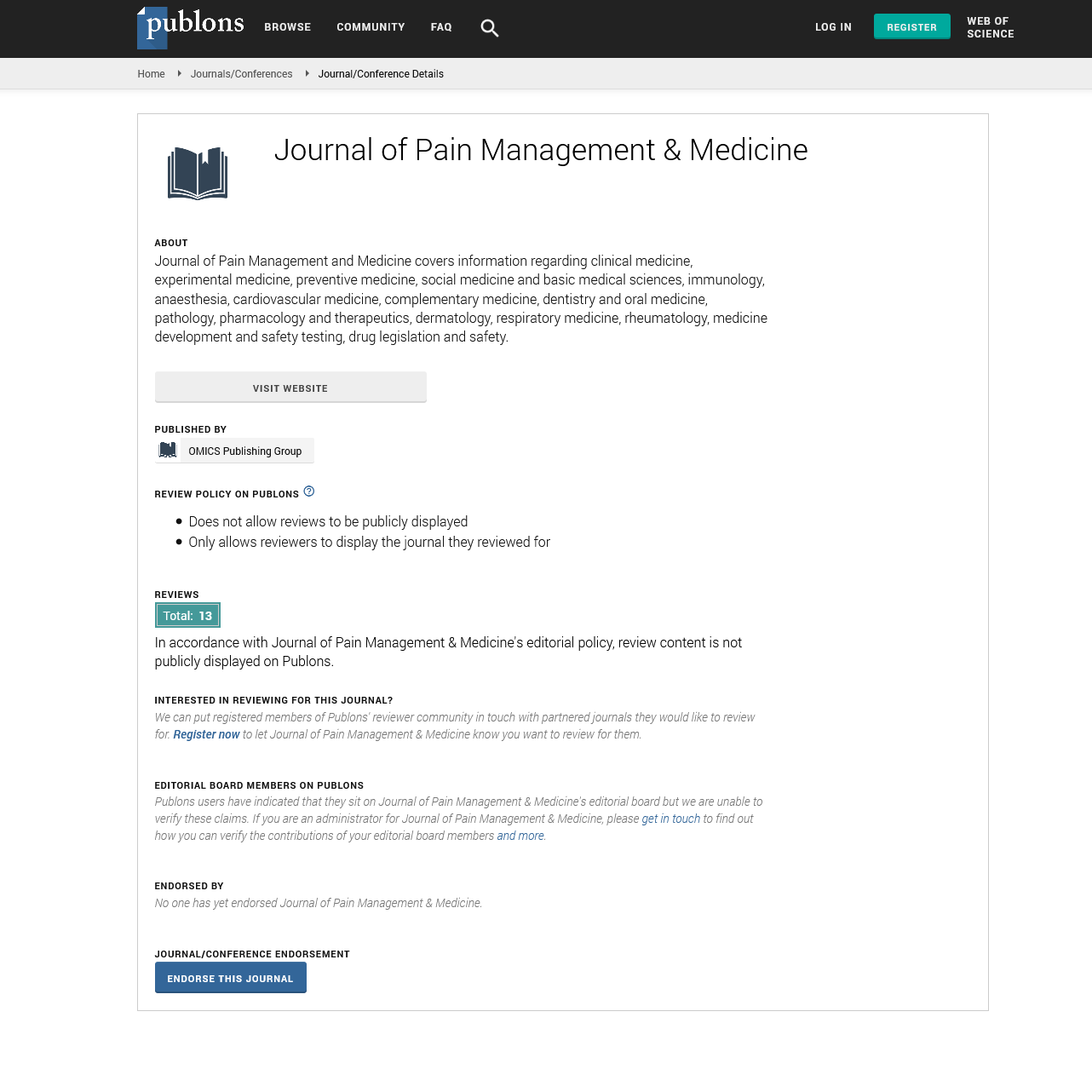Indexed In
- RefSeek
- Hamdard University
- EBSCO A-Z
- Publons
- Euro Pub
- Google Scholar
- Quality Open Access Market
Useful Links
Share This Page
Journal Flyer

Open Access Journals
- Agri and Aquaculture
- Biochemistry
- Bioinformatics & Systems Biology
- Business & Management
- Chemistry
- Clinical Sciences
- Engineering
- Food & Nutrition
- General Science
- Genetics & Molecular Biology
- Immunology & Microbiology
- Medical Sciences
- Neuroscience & Psychology
- Nursing & Health Care
- Pharmaceutical Sciences
Perspective - (2024) Volume 10, Issue 5
Rehabilitation Medicine: Restoring Function and Quality of Life
Romani Gutierrez*Received: 26-Aug-2024, Manuscript No. JPMME-24-27451; Editor assigned: 28-Aug-2024, Pre QC No. JPMME-24-27451 (PQ); Reviewed: 11-Sep-2024, QC No. JPMME-24-27451; Revised: 18-Sep-2024, Manuscript No. JPMME-24-27451 (R); Published: 25-Sep-2024, DOI: 10.35248/2684-1320.24.10.287
Description
Rehabilitation medicine, also known as Physical Medicine and Rehabilitation (PM&R), it is a medical specialty focused on enhancing and restoring functional ability and quality of life for people with physical impairments or disabilities. This field of medicine plays a significant role in the recovery process after injury, illness or surgeries, aiming to help individuals regain independence, improve mobility, manage pain and return to their daily lives. With the use of various therapies, medical interventions and technological advancements, rehabilitation medicine provides holistic care tailored to the patient’s needs.
The role of rehabilitation medicine
Rehabilitation medicine addresses a wide spectrum of conditions, including neurological, musculoskeletal and cardiovascular disorders, as well as injuries caused by trauma. It focuses on restoring the patient’s ability to perform Activities of Daily Living (ADLs), such as walking, dressing, eating and communication. The ultimate goal of rehabilitation is to help individuals achieve the highest possible level of function and independence of the severity of their condition.
Rehabilitation can be provided in various effects, including inpatient rehabilitation facilities, outpatient clinics and longterm care facilities at home. Each effect is chosen based on the patient’s needs and the severity of their condition. Rehabilitation physicians, known as physiatrists, work closely with a multidisciplinary team of healthcare professionals, including therapists, nurses, psychologists and social workers, to create individualized treatment plans that address the patient’s specific goals and challenges.
Types of rehabilitation services
Rehabilitation medicine incorporates several therapeutic approaches depending on the condition being treated. These services include. Physical therapy is one of the most common forms of rehabilitation, designed to improve a patient’s strength, flexibility, balance and co-ordination. It is especially valuable for patients recovering from orthopedic surgeries, fractures and injuries to the musculoskeletal system. Physical therapists use exercises, manual therapy and modalities such as heat, cold and electrical stimulation to restore function and mobility.
For example, patients recovering from hip or knee replacements benefit from physical therapy to regain movement reduce pain and strengthen muscles around the affected joint. Similarly, stroke survivors work with physical therapists to improve motor skills and re-learn basic movement patterns affected by the stroke.
Occupational therapy focuses on helping individuals develop, recover or maintain the skills needed for daily living and working. While physical therapy primarily addresses mobility and movement, occupational therapy is concerned with fine motor skills, cognitive functioning and adaptations needed to perform ADLs independently.
Occupational therapists assess the patient’s ability to perform tasks such as dressing, cooking, writing and other personal care activities. They may introduce assistive devices, such as special utensils for eating or modified tools for personal hygiene, to support the patient’s independence. This type of therapy is especially important for people recovering from strokes, Traumatic Brain Injuries (TBIs) or neurological disorders such as Parkinson’s disease.
Speech and language therapy is essential for individuals who have difficulty with communication, swallowing or cognitivecommunication disorders. Speech therapists, also known as Speech-Language Pathologists (SLPs), work with patients to improve speech articulation, language comprehension and fluency, as well as manage conditions such as aphasia, dysarthria and dysphagia.
For patients who have suffered a stroke, speech therapists play a vital role in helping them regain their ability to speak, understand language and swallow safely. Speech therapy is also valuable for children with developmental delays or adults with degenerative diseases including Amyotrophic Lateral Sclerosis (ALS) or Multiple Sclerosis (MS).
Vocational rehabilitation helps to individuals with disabilities return to work or adapt to new employment opportunities after an injury or illness. Vocational counselors assess the individual’s job skills, provide career counseling and provide job training programs that align with their physical and cognitive abilities.
Citation: Gutierrez R (2024). Rehabilitation Medicine: Restoring Function and Quality of Life. J Pain Manage Med.10:287.
Copyright: © 2024 Gutierrez R. This is an open access article distributed under the terms of the Creative Commons Attribution License, which permits unrestricted use, distribution and reproduction in any medium, provided the original author and source are credited.

